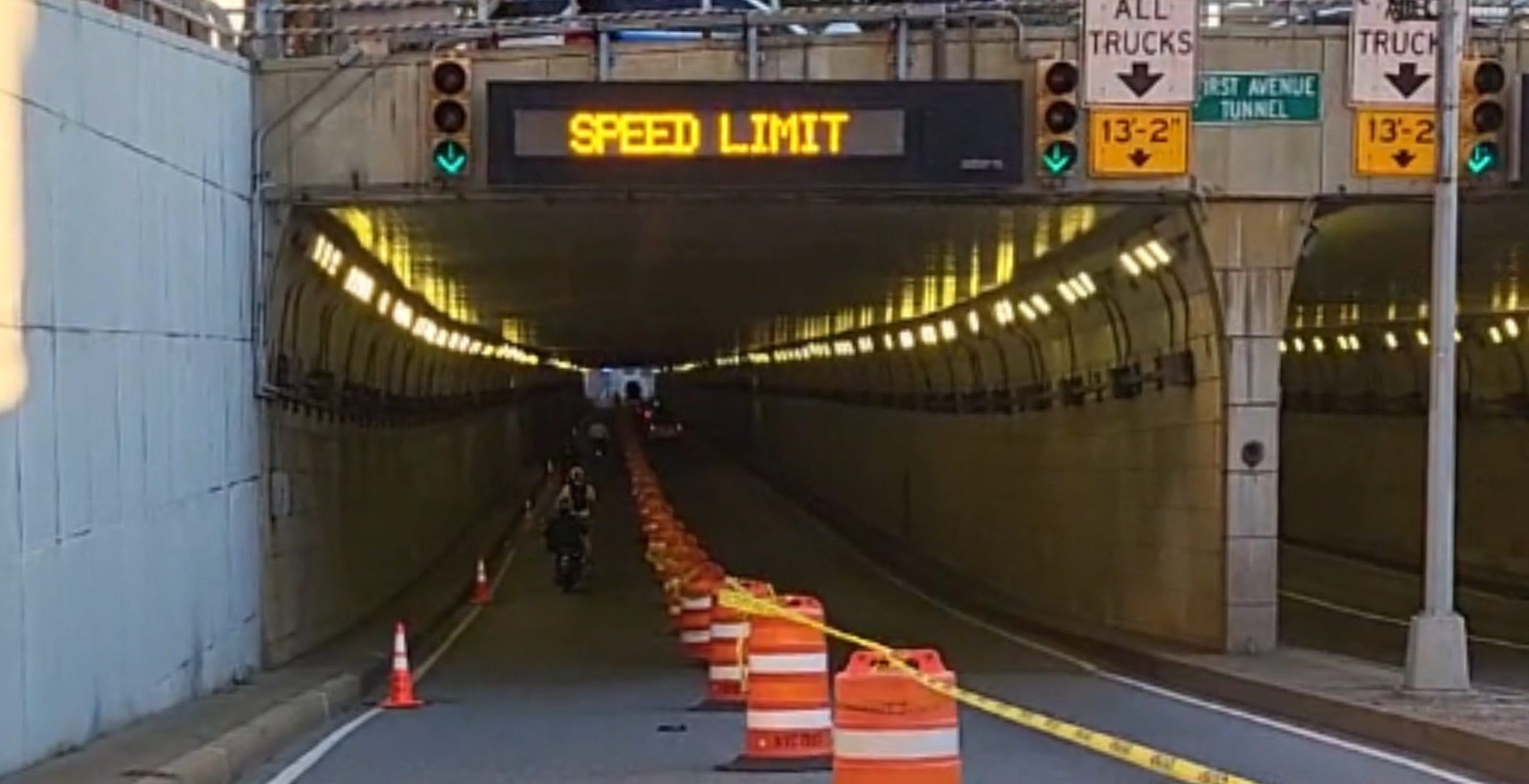It's a good kind of tunnel vision!
The city wants to permanently reroute the First Avenue protected bike lane through the underground tunnel between E. 40th and E. 49th streets this summer — before September's UN General Assembly, Department of Transportation officials revealed on Monday.
The agency hopes to get moving quickly, but has yet to finalize designs to reconfigure the tunnel's entrance and exit, officials told Manhattan Community Board 6’s Transportation Committee, which wholeheartedly endorsed the idea.
“It is a very innovative concept. I don't know how many bike tunnels we have, maybe this is the first, to my knowledge,” said committee Vice Chair Barak Friedman. “It's a great idea that cyclists should have an express lane.”
Since 2019, DOT, NYPD and federal law enforcement have set up a bike lanes detour through the underground tube on a temporary basis during the General Assembly, in order to close the existing above-ground path as a security measure during the annual confab of world leadership.
UNGA means bike tunnel! pic.twitter.com/4HSTwW92vD
— Kevin Duggan (@kduggan16) September 21, 2023
DOT's permanent plans entail a similar setup, but with concrete barriers instead of orange barrels, to create an eight-foot-wide northbound bike path in the western tube of the tunnel, as shown below:

Changes to the surface level are still in development, but will likely include improved an approach and exit, along with safer intersections at E. 45th and E. 47th streets, according to DOT.
“I don't have any design to be able to show you, because we're still trying to figure out the best way to be able to control traffic that's going up onto First Avenue instead of the tunnel,” said Hayes Lord of DOT's bike unit.
Officials said they wanted to get moving on the project as soon as July, and wrap by August ahead of the assembly. Road resurfacing crews will begin work on that stretch soon. If repaving takes longer, DOT will have to wait until after the international confab, Lord said.
Committee members urged DOT to design the street-level bike lanes to avoid conflicts with motorists. For example, the city should move the painted path approaching E. 42nd Street on an incline from the middle of the road to the curb, members said. DOT should also upgrade the bike lanes between 48th and 49th streets to a protected bike lane, they said.
“[It’s] really difficult on a traditional bicycle, and to have cars whiz by on either side of you is very scary,” said committee member Larry Scheyer, of the 42nd Street approach.
The committee unanimously voted to support the concept of a protected bike lane in the tunnel, but asked DOT to include their design suggestions around the tunnel and give the community board a chance to review the final plans.
DOT officials said they would not have a final design before the community board breaks for the summer in July.






